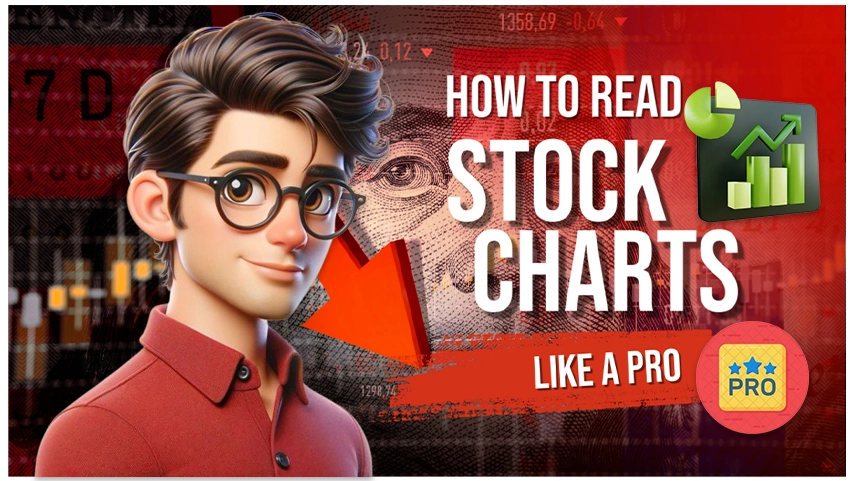How to Read Stock Charts Like a Pro
It is necessary to understand how you can read share maps to make informed investment decisions. Whether you are an early or an experienced businessman, map reading help you detect trends, give time for your trades and reduce the risk. Here is a simple guide that helps you read a professional as a share map:

1. Understand map types
• Line Chart: Over time, the final prices of the
stock reflect. Easy and useful to detect long -term trends.
• Bar Chart: Opening, high, low and closing price
(OHLC) screens. The value helps identify reach and instability.
• Candlestick Chart: The most popular chart. Each
candle shows open, high, low and closer for a certain period of time. It
clearly shows patterns and trends.
2. Know the Time Frame
The chart can be set for different times as:
• Intraday for short-term traders (5-minute, 15-minute)
• Daily/weekly for swing or position dealers
• Monthly for investors with a long time
Choose the correct time limit depending on your trade style.
3. Identify large map components
• Price axis (Y-axis): Represents stock price
• Time axis (x-axis): Time represents intervals
• Volume bar: Show how much the stock was sold - high volume often confirms strong trends
4. Use Moving Averages
The price for showing the average average trends smoothly.
• Simple sliding average (SMA): Average to turn off
prices for a period of time (eg 50-day SMA)
• Increased sliding average (EMA): Recent prices give more weight
5. Identify trends
• Update: High and high levels of high levels
• Dowstrend: Series with lower and lower culture
• should/range bound: Price trucks within a certain
area
6. Use technical Indicators
Add indicators to confirm:
• RSI (Relative Power Index) - Measures Overbought/Oversold
• MACD (moving average convergence deviation) - the trend
shows strength and direction
Conclusion
Reading r stock chart can seem complex at first, but with
practice it becomes second nature. Focus on trends, patterns and important
indicators to make smart investment decisions. The more diagram you study, the
better your analysis - and you will start thinking like a pro-trader.

0 comments